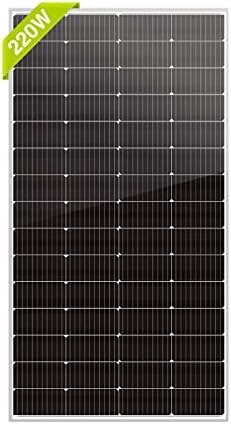## From Installation to Maintenance: Breaking Down the Costs of Solar Energy
The sun peeks over the horizon each morning, casting a golden glow on the vast expanse of solar panels that have become the heartbeat of my off-grid homestead. A few years ago, we made the exciting decision to embrace solar energy fully. It was a blend of anticipation and curiosity. As the panels were installed, a sense of empowerment washed over us; we weren’t merely consumers of energy but rather harnessers of it. This journey has not only taught us the importance of renewable energy but has also brought about financial freedom, and today I’m sharing everything you need to know about the costs involved—from installation to maintenance.
### The Initial Costs: Installation
#### Choosing the Right System
The first step in harnessing solar energy is selecting the right system for your needs. There are two primary types of solar panel systems:
1. **Grid-Tied Systems**: These are connected to the electricity grid, allowing you to draw power from the grid when solar production is low and feed excess power back to the grid.
2. **Off-Grid Systems**: Ideal for those fully embracing independence, these systems function autonomously, powered solely by solar energy and supplemented by battery storage.
#### Installation Costs
The average cost for a residential solar system installation ranges from $15,000 to $30,000, depending on the size and complexity of the system. Here’s a breakdown:
– **Panels**: The most significant cost. High-quality panels can range from $200 to $1,000 each.
– **Inverters**: Essential for converting DC to AC power. Expect to spend between $1,000 and $3,000.
– **Batteries**: If you’re going off-grid, batteries are crucial for energy storage. Prices can vary from $5,000 to $15,000 depending on capacity.
– **Mounting and Wiring**: Professional installation may add an additional $2,000 to $5,000, but it’s often worth hiring a pro for safety and efficiency.
#### Incentives and Rebates
Before calculating the total cost, consider the financial incentives available. These often include:
– **Federal Tax Credits**: A 26% federal tax credit is available for solar installation costs.
– **State Rebates**: Many states offer rebates or grants, which can significantly reduce the initial outlay.
– **Local Incentives**: Some local governments provide incentives for renewable energy solutions.
Accounting for these can help you breathe easier about your initial investment!
### The Ongoing Costs: Maintenance
Once the panels are installed and operational, maintenance becomes the priority for keeping your solar system efficient and effective. Fortunately, solar energy systems are relatively low-maintenance compared to traditional power sources.
#### Regular Cleaning
Solar panels should be cleaned every six months to a year, especially in areas with significant dust, pollen, or bird droppings. A professional cleaning service can charge around $100-$300, or you can DIY with a hose, sponge, and biodegradable soap. Here are a few tips for cleaning:
1. **Opt for a cloudy day**: This prevents streaking and ensures the panels cool down before washing.
2. **Avoid harsh chemicals**: Use only biodegradable soaps to minimize environmental impact.
3. **Check for debris**: Seasonal cleaning will help spot anything accumulated on or around the panels.
#### Monitoring System Efficiency
Regular monitoring is essential to ensure optimal performance.
– **Use Performance Monitoring Tools**: Many systems come with monitoring software that tracks energy production. If you notice a significant drop, it may indicate a problem that requires attention.
– **Professional Inspections**: An annual inspection can spot issues like loose wiring or panel damage. Costs can range between $100-$300 for a thorough check.
### Long-Term Financial Considerations
While the upfront costs can be daunting, it’s essential to consider the long-term benefits:
#### Energy Savings
Once the system is up and running, homeowners often see energy bills drop significantly. Depending on system size and local energy prices, monthly savings can range from $50 to a few hundred dollars. In many cases, solar panels can pay for themselves within 5 to 10 years.
#### Property Value Increase
Did you know solar installations can increase your home’s resale value? Studies suggest solar panels can add about 4% to a home’s value. This means that while your initial investment seems hefty, they can be quite favorable when it’s time to sell.
### Pro Tips for Solar Cost Management
– **Do Your Research**: Different brands have different warranties and energy outputs. Understanding these nuances can save you money in the long run.
– **Network for Informational Resources**: Join local solar energy groups or online forums. These communities can provide tailored advice and even referrals to reputable installers.
– **Take Advantage of Seasonal Sales**: Many solar companies offer discounts during slower months. Keep an eye out for local promotions.
### Environmental and Social Costs: Beyond Dollars
When considering the costs of solar energy, it’s also critical to reflect on the environmental and social impacts. Switching to solar energy contributes to lower carbon footprints, which is an essential consideration for many households today. Additionally, supporting local solar businesses can have positive economic ripple effects in your community.
### Final Thoughts
Investing in solar energy is more than just a monetary decision; it’s a lifestyle choice that empowers you and contributes to a larger movement towards sustainability. By understanding the costs—both upfront and ongoing—you can make a more informed decision that fits your financial and environmental goals.
Whether you’re considering going fully off-grid or merely reducing your carbon footprint, solar energy proves to be not just a reliable source of power but a financially savvy and eco-friendly option as well! The sun is ready; are you?
—
### Conclusion
Embracing solar energy is not merely about powering your home—it’s about enhancing your life and contributing positively to the planet. The installation and maintenance costs can seem astronomical at first glance, but a deeper understanding reveals the true potential for savings and environmental benefits. Armed with this information, you’re well-equipped to embark on your solar journey. So grab those sunglasses, and let’s harness the sun!



